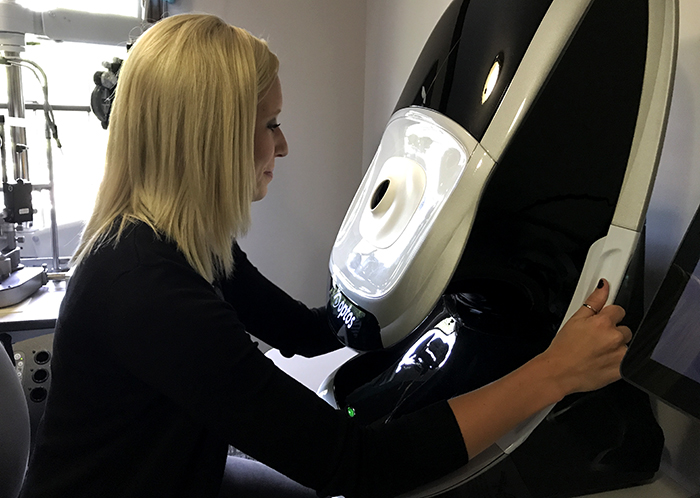 Located in the back of your eye, your retina is the only place in your body where blood vessels can be seen directly. These blood vessels can provide insight on diseases and conditions the body may be experiencing. By looking into the back of your eye, Dr. Miller can find early signs of conditions such as stroke, heart disease, hypertension, and diabetes.
Located in the back of your eye, your retina is the only place in your body where blood vessels can be seen directly. These blood vessels can provide insight on diseases and conditions the body may be experiencing. By looking into the back of your eye, Dr. Miller can find early signs of conditions such as stroke, heart disease, hypertension, and diabetes.
Eye doctors have been examining the retinas for years to aid in the early diagnosis of these conditions, but old technology only allowed them to view a small window of the back of the eye.
At Visual Eyes, we’ve invested in the latest technology that gives us an ultra wide angle view of the retina. This allows us to catch conditions when they begin to appear on your retina, long before they cause changes to vision or pain.
By utilizing Optomap retinal Imaging, we able to quickly take a picture of your retina and discuss any findings with you in just a few minutes.